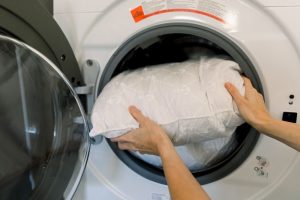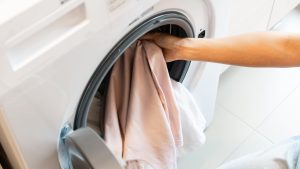How to Open a Locked Washing Machine Door Without Power?
Introduction:
A locked washing machine door without power can be a frustrating issue, especially when you need to access your clothes urgently. Understanding the mechanisms and possible solutions can help you resolve the problem safely and efficiently. This comprehensive guide explores various methods to open a locked washing machine door, underlying causes, safety precautions, and preventive measures to avoid future occurrences.
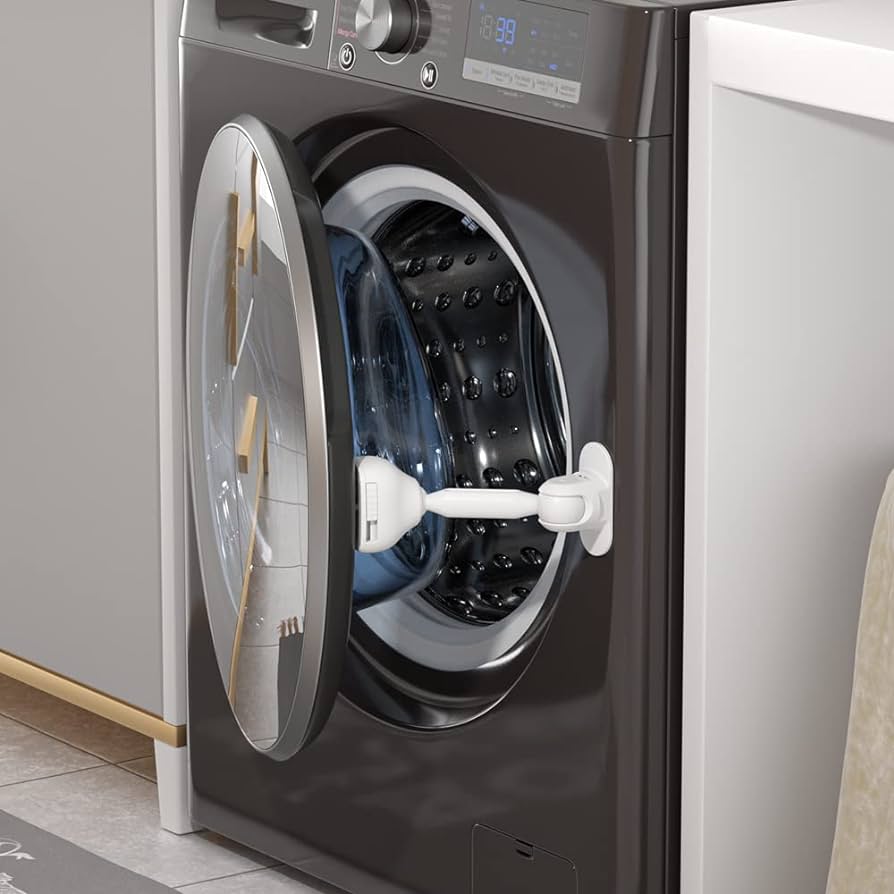
How to Open a Locked Washing Machine Door Without Power?
Understanding the Mechanism of a Washing Machine Door Lock
Washing machines have door lock mechanisms designed to ensure safety and proper function during operation. Understanding how these locks work helps in addressing the issue without causing damage.
Electronic Door Lock: Modern washing machines typically use electronic locks that engage once the cycle begins and only release when the cycle ends. These locks are controlled by the machine’s computer system and require power to operate correctly.
Mechanical Door Lock: Older models might use mechanical door locks, which physically lock the door using a latch or other mechanism. Mechanical locks can be manipulated manually if the proper techniques are known.
Safety Features: Door locks are crucial for safety, preventing the door from being opened during operation, which could cause water spillage, injury, or machine damage. Understanding these features is essential for safely bypassing the lock when necessary.
Common Causes of a Locked Washing Machine Door Without Power
Identifying the root cause of a locked door without power helps in choosing the appropriate method to open it.
Power Outage: A sudden power outage during a wash cycle can result in the door remaining locked. Without power, the electronic lock cannot receive the signal to release.
Faulty Door Lock Mechanism: If the door lock mechanism itself is faulty or damaged, it can remain engaged even after the power is restored. This issue might require manual intervention to unlock.
Incomplete Cycle: If the washing cycle did not complete due to interrupted power, the door lock might not disengage properly. The machine’s programming typically requires the cycle to finish before unlocking.
Drainage Issues: Water remaining in the drum can prevent the door from unlocking. Many washing machines include a safety feature that prevents the door from opening if water is detected inside.
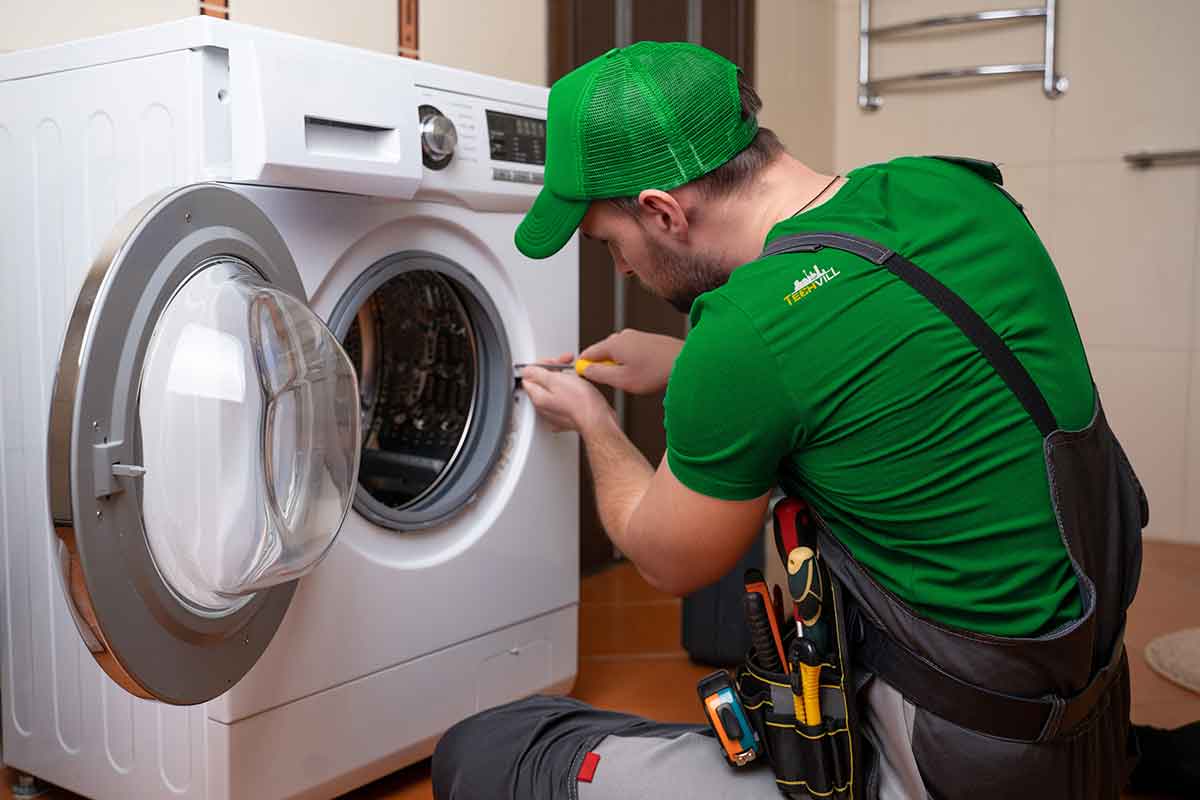
Safety Precautions Before Attempting to Open the Door
Ensuring safety is paramount when dealing with a locked washing machine door, especially when power is involved. Follow these precautions to minimize risk.
Disconnect the Power: Even if the washing machine has no power, it’s essential to disconnect it from the power source entirely. Unplugging the washing machine ensures no accidental power surge or electrical hazard.
Turn Off the Water Supply: Turn off the water supply to prevent any potential leaks or flooding during the process. This is particularly important if you need to move or tilt the machine.
Wear Protective Gear: Wear protective gloves and ensure the work area is dry to prevent any accidental injury. Wet surfaces can be slippery and increase the risk of falls or other accidents.
Refer to the User Manual: Consult the washing machine’s user manual for any specific instructions or precautions related to the model. Manufacturer guidelines can provide safe methods for unlocking the door.
Tools Required: Gather necessary tools such as screwdrivers, a flashlight, and a wire or string. Having the right tools on hand can help you perform the task more efficiently and safely.
Manual Release Method for Electronic Door Locks
Many modern washing machines with electronic locks include a manual release feature. This method can unlock the door without power, often found in the user manual instructions.
Locate the Manual Release: Manufacturers often include a manual release mechanism near the door lock or the bottom front panel. This release might be a small lever, pull cord, or latch that can be accessed by removing a panel or cover.
Access the Lever or Cord: Carefully remove the bottom front panel or cover to expose the manual release mechanism. Use a screwdriver if necessary, taking care not to damage any parts.
Engage the Manual Release: Pull or move the manual release lever according to the manufacturer’s instructions. This action should disengage the door lock, allowing you to open the door manually.
Open the Door: Gently pull the door open once the lock is disengaged. Ensure that the drum is not filled with water before fully opening the door to avoid spills.
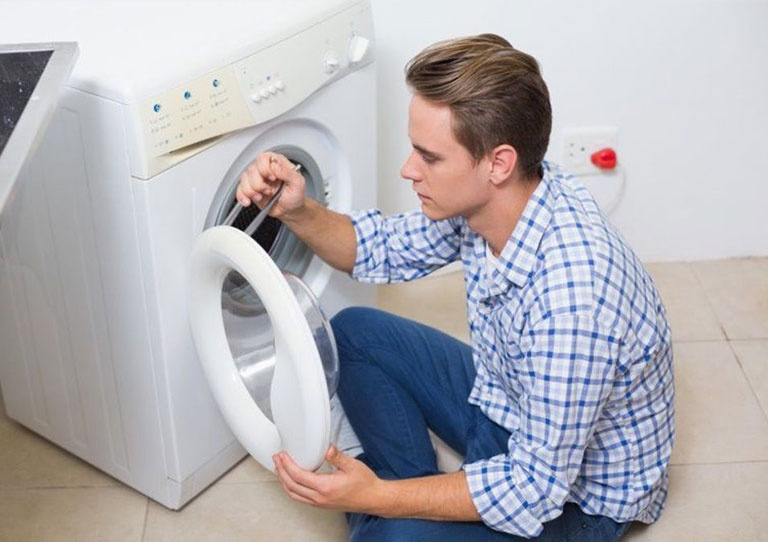
Using a String or Wire to Release the Lock
If your washing machine does not have a manual release, using a string or wire can be an effective alternative method for mechanical door locks.
Prepare the String or Wire: Use a strong, thin string or wire approximately 30-40 cm long. A shoelace or similar string can also work for this method.
Insert the String: Slide the string or wire between the door and the washing machine body at the location of the door lock. The exact position varies by model, but it’s typically around the middle of the door’s edge.
Loop and Pull: Once the string is in place, create a loop and pull both ends of the string towards the hinge side of the door. This action should catch the door latch mechanism and pull it towards the unlocked position.
Open the Door: With the latch released, gently open the washing machine door. Proceed carefully to avoid breaking the latch or damaging the door.
Using a Coat Hanger to Access the Door Lock
Another method involves using a coat hanger to physically reach and manipulate the door lock mechanism, especially useful for front-loading machines.
Straighten the Coat Hanger: Use a wire coat hanger and straighten it out, creating a long, thin tool with a small hook at one end.
Locate the Lock Area: Insert the straightened coat hanger between the door and the machine’s body, aiming towards the lock mechanism. The hook should be positioned to catch the latch or lever within the lock.
Manipulate the Lock: Gently maneuver the coat hanger to hook and pull the latch or lever towards the unlocked position. This step might take some finesse and patience.
Open the Door: Once you successfully disengage the latch, pull the washing machine door open carefully. Check for any residual water in the drum before fully opening the door.
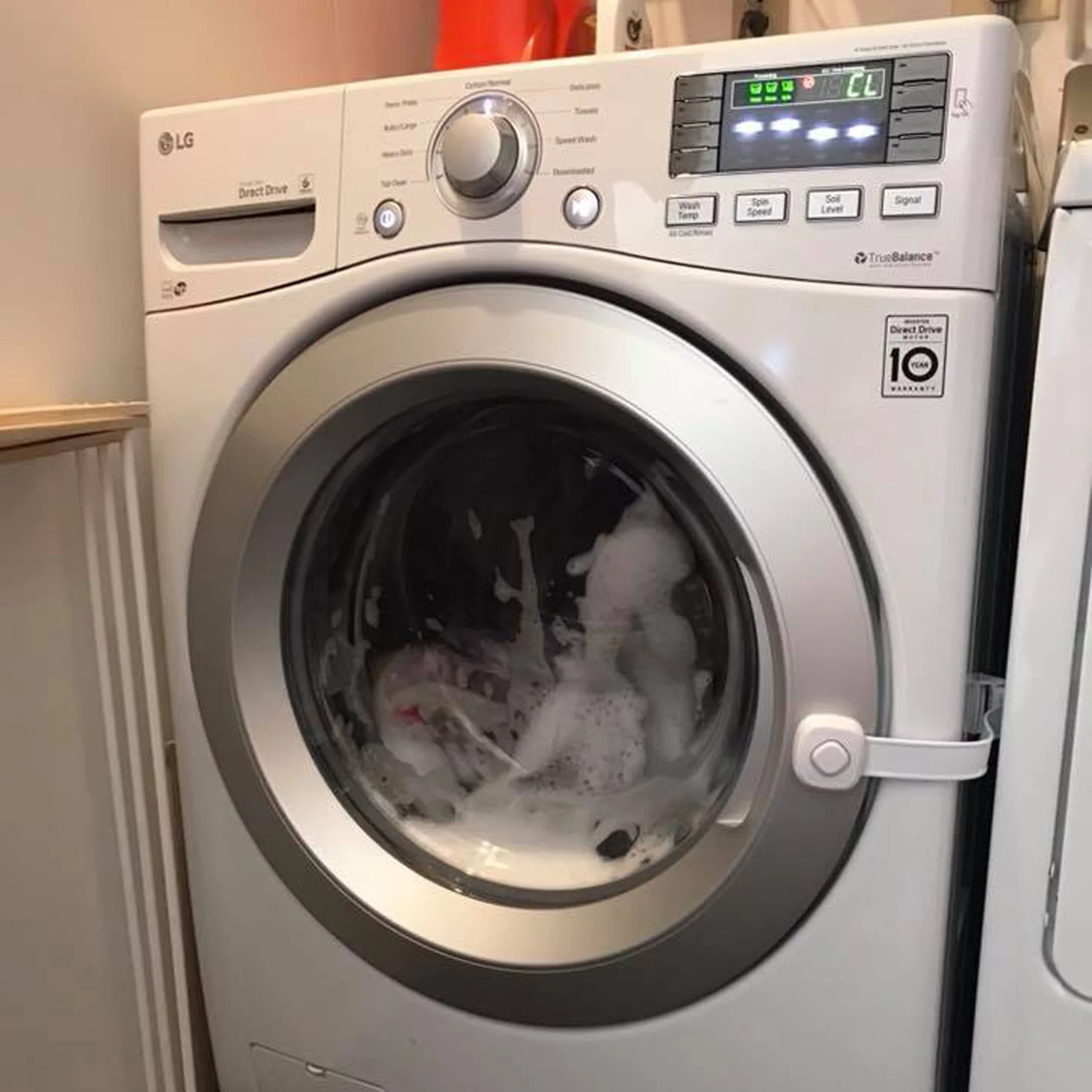
Dealing with Water Inside the Drum
If the washing machine has water inside the drum, draining it manually is essential before attempting to open the door to prevent flooding and spills.
Access the Drain Filter: Locate the drain filter, usually found at the bottom front of the washing machine behind a small access panel. Use a screwdriver to remove the panel if needed.
Prepare a Container: Place a shallow container or rag under the drain filter to catch any water. Be prepared for a slow drain or a gush of water, depending on the amount inside the drum.
Open the Drain Filter: Unscrew the drain filter cap slowly to control the flow of water. Allow the water to drain completely into the container. This process might take some time if there is a lot of water.
Close the Filter: Once all water is drained, securely screw the drain filter cap back into place and replace the access panel.
Unlock the Door: With the drum now empty, use one of the previously mentioned methods to unlock and open the washing machine door safely.
Professional Assistance and When to Seek Help
In some cases, attempting to unlock the washing machine door without power might be beyond your capability or comfort level. Knowing when to seek professional help is crucial.
Complex Mechanical Issues: If the door lock mechanism is severely damaged or if you encounter complex mechanical issues, seeking professional assistance is advisable. A qualified technician can assess and repair the lock without causing further damage.
Persistent Problems: If the washing machine door remains locked after multiple attempts or continues to lock frequently, there might be underlying electrical or mechanical problems that need expert evaluation.
Warranty Considerations: If your washing machine is still under warranty, attempting DIY repairs might void the coverage. Consult the manufacturer or authorized service center for assistance covered by the warranty.
Avoiding Further Damage: Inexperienced attempts to force open the lock can damage the door, lock mechanism, or electrical components. Professional technicians have the tools and expertise to handle the issue without causing additional harm.
Documentation and User Manual: Always refer to the washing machine’s user manual for specific instructions and troubleshooting tips. The manufacturer can also provide guidance through customer service hotlines or online support.
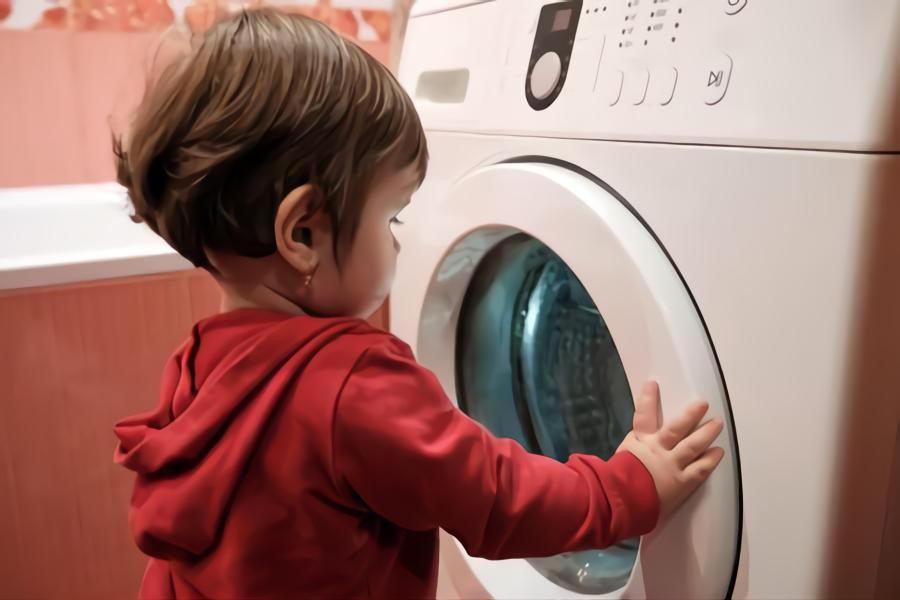
Preventive Measures to Avoid Future Lock Issues
Taking preventive measures ensures that you avoid future occurrences of locked washing machine doors, enhancing the longevity and reliability of your appliance.
Regular Maintenance: Perform regular maintenance on your washing machine, including cleaning the drain filter, checking for blockages, and ensuring all parts are functioning correctly.
Proper Loading: Avoid overloading the washing machine, as this can cause mechanical strain and potentially affect the door lock mechanism. Follow the manufacturer’s guidelines for load capacity.
Power Stability: Use surge protectors to prevent power surges that might damage the washing machine’s electronics. Ensure stable power supply to avoid unexpected shutdowns and locked doors.
Follow Proper Shutdown Procedures: Ensure the washing machine completes its cycle fully before turning it off. Abruptly stopping the machine mid-cycle can cause it to remain locked due to safety features.
Regular Inspections: Regularly inspect the door lock mechanism for any signs of wear, damage, or malfunction. Addressing issues early prevents them from escalating into more significant problems.
Conclusion
Opening a locked washing machine door without power requires understanding the underlying mechanisms, employing the correct methods, and ensuring safety. By following the steps outlined in this guide, you can address the issue efficiently and avoid future occurrences through preventive measures. Whether dealing with electronic or mechanical locks, having the knowledge to unlock your washing machine door ensures you handle such situations confidently and effectively.
